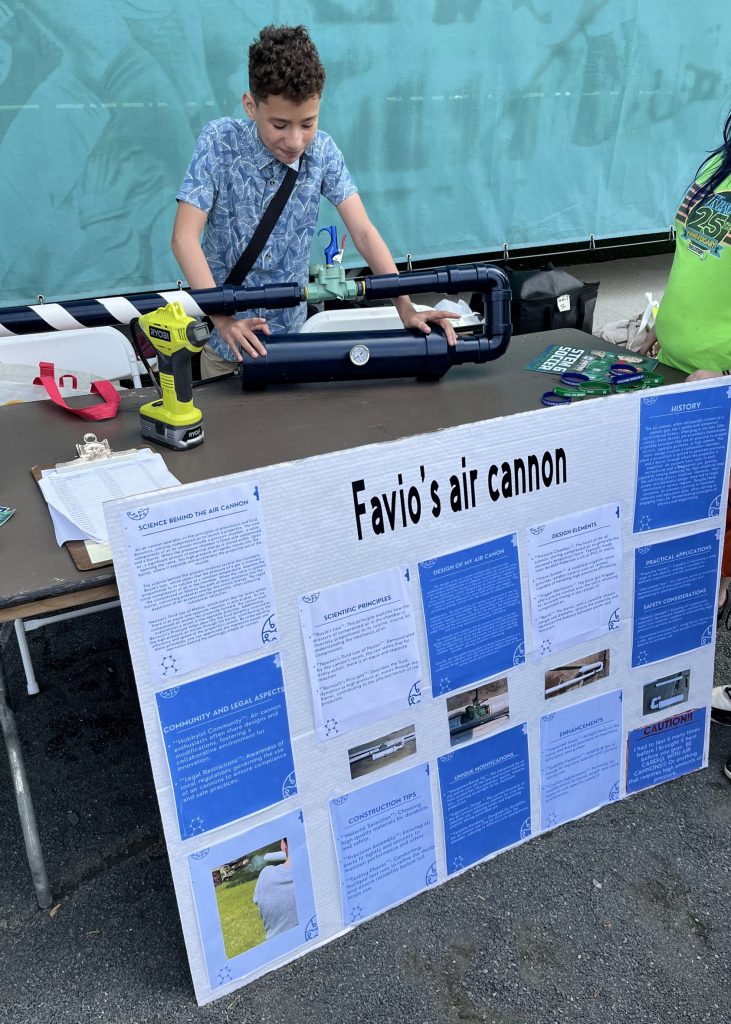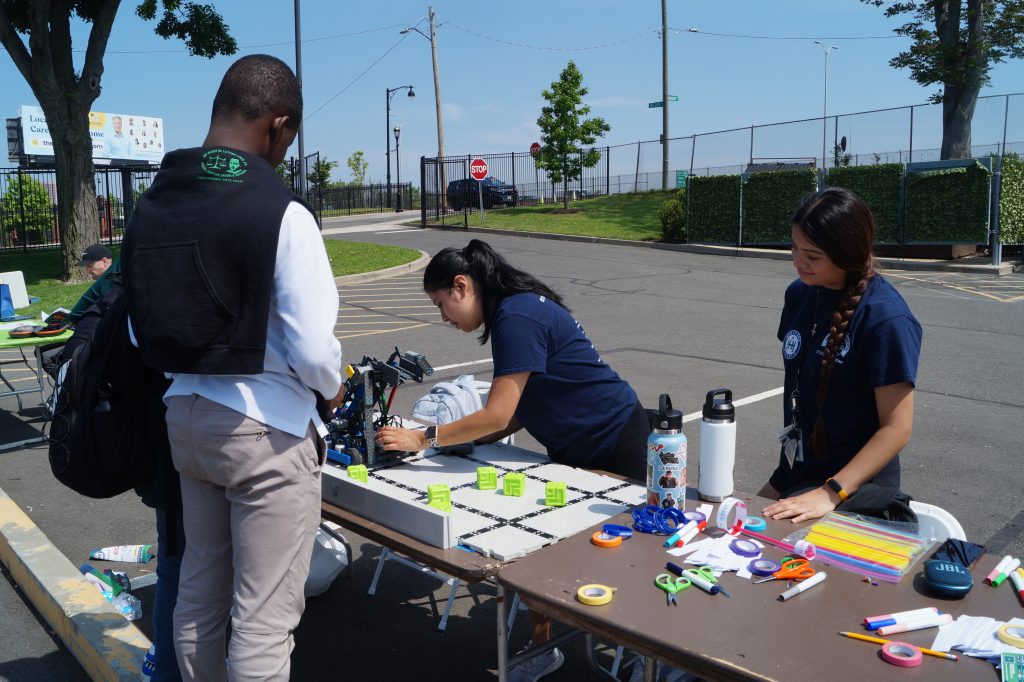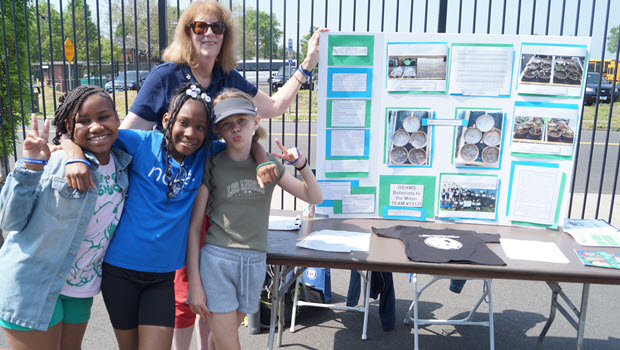Robots, rockets, air cannons, and lunar plants aren’t what you’d expect to find at a professional sports stadium, but during Hartford Athletic’s STEM Soccer Education Day a wide variety of projects were on display at Trinity Health Stadium as students combined learning with relaxation and fun.
The professional soccer team hosted the fourth annual event so that students could present projects to their peers and try out hands-on activities set up by local businesses and organizations before watching the Hartford Athletic take on the Long Island Rough Riders in a friendly match that the Athletic won 2-1.
“STEM and Soccer Education Day is one of our strongest community events,” said Hartford Athletic CEO Nick Sakiewicz. “It is a great way for us to connect with students and show them the importance and value of education. We love to see all the hard work these students put into their projects and hope they are inspired by the projects created by their peers. We are so proud to offer a fun and different opportunity for kids to learn.”
One popular student project was demonstrated at half time by its creator, Favio Acevedo, a sixth grader at the CREC Academy of Science and Innovation.
“This is an air cannon that uses compressed air to launch objects at high speeds out of the barrel: plums, potatoes, t-shirts—anything you can fit in this, I have launched,” said Acevedo.

CREC Academy of Science and Innovation sixth grader Favio Acevedo showed off the air cannon he designed and built at Hartford Athletic’s STEM Soccer Education Day.
“My teacher helped me sketch out the ideas for it,” he added. “I got all the pieces, put it together, failed, put it together again, kept working on it.”
That spirit of perseverance is one of the many lessons teachers hope students take away from the day and the projects they showcased.
CREC Glastonbury-East Hartford Magnet School teacher Terry Wilson (pictured above with her students) received funding from the Connecticut Space Grant Consortium for a group of third through fifth graders to participate in the Plant the Moon Challenge, and they showcased their results at STEM Day.
“They collaborated together to come up with a testable question: in this case it was ‘how much soil amendment needs to be added to lunar regolith [the broken rocks and dust that cover the moon] in order for spinach to grow and thrive,'” Wilson said. “NASA is looking at research to colonize the moon and Mars, and food sources are going to be a huge issue for them because to bring payloads of food and growing materials to both the moon and Mars is problematic.”
The students met every week to measure the plants’ growth and water and care for them.
“They came up with a testable question, developed a hypothesis, and really put the project together,” Wilson said. “It didn’t turn out exactly like they expected. We also had a growth control group, which we were able to midpoint replant, repot, and take a look at it in a new light to see if we had done something that was out of the experimental design. What we basically figured out was that a combination of organic material and lunar stimulant can be used to successfully grow plants. And the kids came up with the idea of using worm compost because in the past, NASA has successfully had worm composters live up in the International Space Station.”
Fifth graders who participated in the project last year were on hand at STEM Day to explain their findings to students from other schools checking out the exhibits.

The CT STEM Academy was one of several local organizations offering hands-on activities for students at STEM Day.
“It was really fun,” said Phallon. “It was really cool to see that we can really plant stuff on the moon—that can be the second Earth probably.”
“I found it really interesting how even though we planted in sediments like what are on the moon, how there was algae in the plants. So, I was a little confused how that worked, but the plants still grew,” Zionna said.
“I thought it was cool how tall the plants got and how more of them sprouted in the compost, but the ones with less compost got taller,” Lillian said. “I also think it’s weird because the spinach didn’t look like spinach. It looked different than the pictures on the package.”
The students’ hard work ended up being recognized for Best in Show for Innovative Experimental Design at the elementary level—one of only three elementary schools in the country to be recognized.
“It was definitely a learning experience for both me and my students in terms of the precision of the data collection and the accountability that was required by the competition. They had to submit videos along with reports,” Wilson said.
She added, “Being a coach for the kids is really helping them through the process because this is not traditionally the type of science that third, fourth, and fifth grade students do on a regular basis, but it’s important that they have exposure to these opportunities.”







